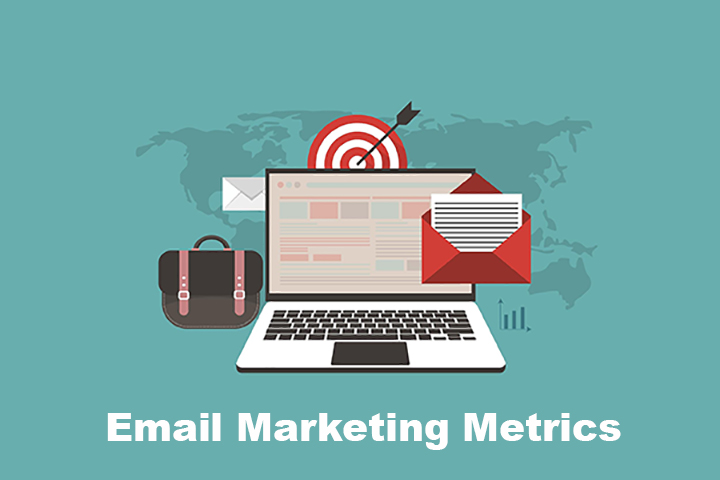What should you track in your emails? Probably, we must think first, why should you track your emails. It doesn’t mean, you’ve sent a greeting card to your granny and want to know whether she has received it and how many times she has read it. We discourse on email marketing and the way to estimate its effectiveness. so, even in granny’s case, how is it possible to know her proper reaction?
It is the process called “email analytics”, the sophisticated designation of marketing effectiveness estimation.
So, whatever you do – simple business, online selling, creative designs etc. – you must know how people react on it, are your efforts being appreciated, or there is something to be changed or improved.
All leading mail-tracking software providers and marketers consider that there are six marketing metrics that should be tracked in an obligatory way: clickthrough rate (CTR), conversion rate, bounce rate, sharing/forwarding rate, list growth rate and overall return on investment (ROI). In some other recommendations, other topics to track out can be found: web traffic, complaint rate, and unsubscribers.
Let’s discuss the basic ones, and how can an email signature trigger the recipient’s emotion and affect your statistics.
Contents
Top 6 Email Marketing Metrics You Should Track
Clickthrough Rate (CTR)
CTR is the simplest thing to explain – it is the percentage of your mail recipients, who clicked at least one (or more) links you’ve offered in your email.
How is it calculated: unique clicks made are divided on the total quantity of mails sent and multiplied by 100. Pay attention, that if calculating on “total” clicks the received data may confuse you, as one mail receiver may click your link more than one time, and it should be counted as multiple clicks by many people. In this topic an exclusive signature of the letter sent can influence the rate in two positive ways: it can induce a person to click the mail, so the CTR has a chance to be improved, moreover, it can be supplied with URL-tracker, to count only unique clicks, so the result you get eventually should be your truthful CTR.
Conversion Rate
The conversion rate is the percentage of those, who not only clicked the link, represented in your mail but also made an acquisition or at least filled in a lead generation form on the site (in other words, all recipients, who completed the hoped-for mission).
How is it calculated: the number of people, who completed the hoped-for mission are divided on the total quantity of mails sent and multiplied by 100.
To track this metric a unique URLs for your email links should be made to identify the hoped-for mission (e.g. downloading of some offered content or purchasing of exact product) are directly related to an email sent by you.
Bounce Rate
The bounce rate is the percentage of total mail, sent by you, that was not eventually delivered to your target clients’ mailboxes.
How is it calculated: bounced emails number is divided by total mails sent number and multiplied by 100. Bounces are commonly met of two kinds: so-called “soft” bounces, when an email cannot enter the mailbox due to some technical problems ( e.g. receiver’s mailbox is repleted, or there are some issues with internet connection), and “hard” bounces – when you don’t know the proper address, you the one you have is invalid. Bounce email addresses must be instantly deleted from the list of your emails not to spoil the statistics eventually.
Sharing/Forwarding Rate
It’s very clear – the percentage of those who clicked “share” or ”forward”.
How is it calculated: also very easy – share/forward clicks quantity is divided by total mails delivered number and multiplied by 100.
Why is it important? Because we live in the world where social networks rule, and share/forward clicks will undoubtedly mean new contacts for you.
List Growth Rate
It is the assessment of the newcomers in your mail list in percentage.
How is it calculated: all the new email addresses (with the subtraction of those who unsubscribed or complained) are divided into the number of addresses in your mail list before and multiplied by 100. Everything is absolutely clear – that’s how you see whether the interest to you is constantly growing.
Overall Return On Investment (ROI)
Well, to put it in a nutshell, it is how many times your investment returned to you after you email campaign, a money equivalent of your efforts, the expediency of your business.
How is it calculated: the investments are subtracted from the additional sales made owing to your email campaign and multiplied by 100.
As you see, all analysis can be started only after actual opening an email. How can an email received by anybody fascinate him instead of annoying being some usual advertisement plague? Here comes newoldstamp.com, a company, that offers an original and creative signature to any kind and purpose mails sent. Marketers, photographers, creators, designers, all types of small business owners and many others can find original email signature examples at our site, and will certainly feel the rising interest to their activities after obtaining their own professional eye-catching signature that will not let an email receiver just put the letter into a junk-mail folder. And an article about mail tracking will be read surely again, more attentively.


This was helpful broh! Was searching about email marketing analytics and found this. Liked the post because it was well explained.